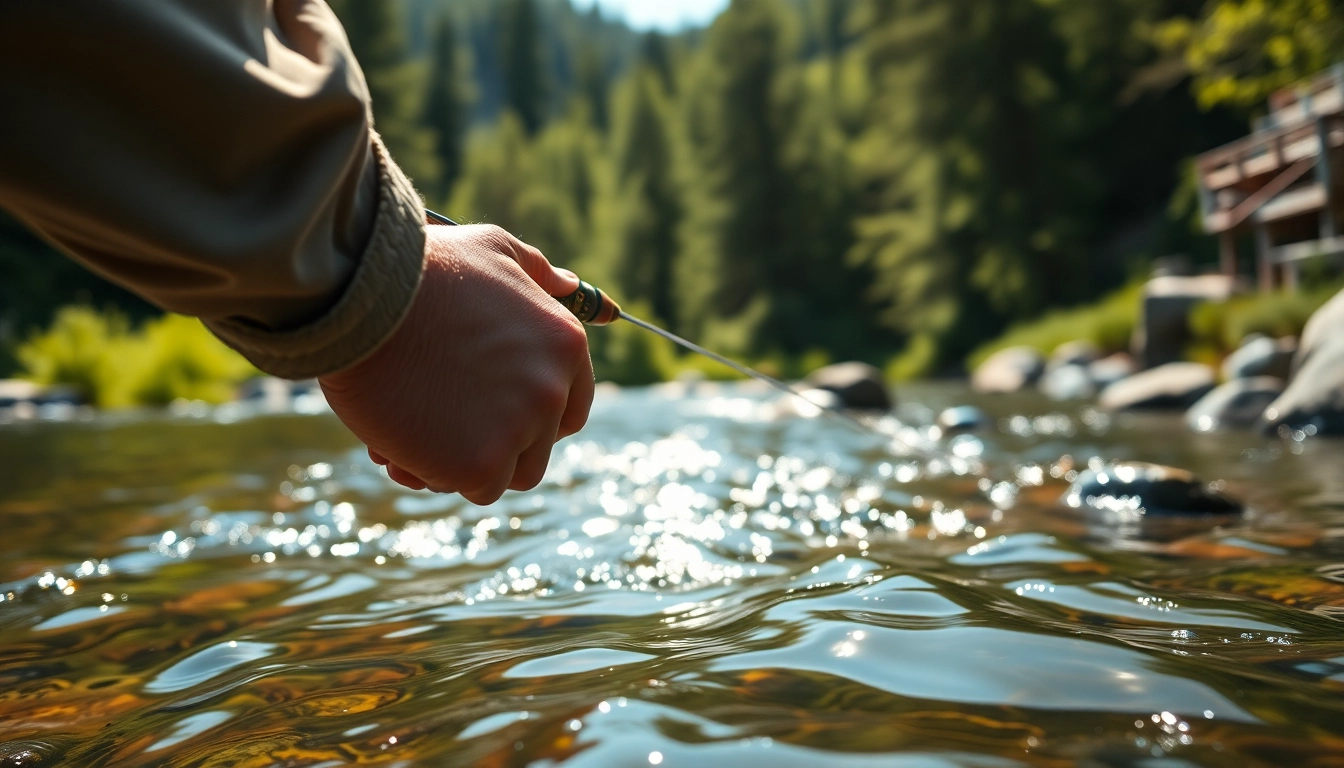
Understanding the Basics of Fly Fishing Line
What Is Fly Fishing Line?
At the core of the fly fishing experience is the fly fishing line, a specialized component essential for casting flies and catching fish. Unlike traditional fishing lines, fly fishing lines are designed to be heavy, enabling them to carry the fly, which is considerably lighter than the weight of the line itself. This unique design creates a distinctive experience for anglers, bridging the art of casting with various techniques tailored to specific fishing scenarios.
Types of Fly Fishing Line Explained
There are several types of fly fishing lines, each suited for different applications. The primary types include:
- Floating Lines: These are the most commonly used fly lines and are ideal for topwater fishing. They remain on the surface, allowing anglers to present dry flies efficiently.
- Sinking Lines: These lines are designed to sink below the surface and are perfect for targeting fish that feed at different water depths. They come in several sink rates, which dictate how quickly they descend.
- Intermediate Lines: These lines sink slowly and are best suited for fishing in mid-water columns. They give anglers flexibility in varying conditions.
- Specialty Lines: These include lines designed for specific fishing techniques, such as spey casting or switch rods, and may incorporate characteristics of the above categories.
Choosing the Right Fly Fishing Line for Your Needs
Selecting the appropriate fly fishing line depends significantly on the environment, the targeted species, and the specific techniques you plan to use. Factors to consider include line weight, line taper (the thickness variation along the line), and material. Generally, it is recommended to match the line weight with the weight of your fly rod for optimal performance. Additionally, considering the conditions—such as whether you’re fishing in freshwater or saltwater—will influence your choice.
Key Features of Quality Fly Fishing Lines
Line Weight and Its Importance
Line weight refers to the line’s designation that indicates its heaviness and is usually represented as a number (from 2 to 12). This plays a critical role in the casting integrity and overall performance of the combination of rod, line, and reel. The wrong line weight can lead to poor casting and affect your ability to present a fly effectively. Generally, lighter lines (1-4) are suited for small freshwater species, while heavier lines (8-12) are intended for larger saltwater species.
Material Composition of Fly Fishing Line
Fly fishing lines can be made from various materials, most commonly nylon, which is praised for its balance of flexibility and durability. Other advanced materials may include fluorocarbon, which offers low visibility underwater, and braided lines for superior strength and sensitivity. Understanding the characteristics of these materials helps anglers choose lines that will perform reliably in their selected fishing conditions.
Coating Options and Their Advantages
The coating of a fly fishing line significantly impacts its performance. PVC coatings provide smooth casting and increased durability, while polyurethane coatings enhance flexibility, especially in cold weather. Additionally, specific coatings are designed to provide extra floatation, abrasion resistance, or enhanced sinking capabilities, making it essential for anglers to consider their fishing scenarios when selecting a line coating.
How to Properly Care for Your Fly Fishing Line
Cleaning Techniques for Longevity
To extend the lifespan of your fly fishing line, it is crucial to maintain its cleanliness. Regular cleaning involves rinsing the line with fresh water after each use to remove debris, dirt, and salt. Use a soft cloth and a gentle cleanser specifically formulated for fly lines to avoid damaging the coating. It’s also advisable to periodically check the line for signs of wear or damage.
Storage Practices to Prevent Damage
Proper storage is key to maintaining the integrity of your fly fishing line. Avoid leaving it exposed to sunlight or extreme temperatures. Instead, store your line in its original case or on a spool. If you frequently change lines, use a line winder to avoid tangles and kinks, which can weaken the line. Additionally, consider re-spooling the line once a year, depending on usage, to prevent memory and maintain casting efficiency.
Repairing Common Issues with Fly Fishing Line
Over time, wear and tear can cause issues with your fly fishing line, including nicks or frays. For minor damages, you can employ a line repair kit, which includes patches designed to seal small breaks. However, for significant damages or old lines that no longer perform well, replacement may be necessary. Recognizing these issues early on and addressing them can prevent further degradation of performance.
Advanced Techniques for Effective Casting
Mastering the Roll Cast with Fly Fishing Line
The roll cast is an essential technique for fly anglers who fish in tight spaces, allowing for effective line management and a smooth presentation. To perform a roll cast, start by positioning the fly in front, allowing it to rest on the water surface. Then, lift the rod while pulling the line back, creating tension, and promptly push forward, causing the line to unfurl smoothly onto the water. This technique is particularly useful when obstacles are present, enhancing precision without the need for a back cast.
Improving Accuracy and Distance
For those looking to enhance their casting accuracy and distance, focusing on your technique is essential. Proper body alignment, smooth acceleration, and a controlled stop of the rod will facilitate better casts. Visualizing your target can also aid in improving precision, while practicing with different line weights can enhance your casting range over time. Using a target like a hula hoop or a floating marker on the water can provide added motivation for improving accuracy.
Adjusting Line for Different Water Conditions
Different water conditions necessitate adjustments to your fly fishing line. For instance, in windy environments, a heavier line can help maintain control, while in calm waters, a lighter presentation may yield better results. Moreover, understanding how the characteristics of your line interact with water temperature, wind direction, and water flow will enable you to make informed adjustments to optimize your catch rate.
Evaluating Performance and Upgrading Your Fly Fishing Line
Signs It’s Time to Replace Your Fly Fishing Line
Even the highest quality fly fishing lines have a finite lifespan, and recognizing when to replace them is critical. Common indicators include persistent knots, braiding, fading color, or a decrease in floating capability. If your line consistently fails to cast effectively or feels brittle, these are clear signs that it’s time for an upgrade. Regular inspection should be part of your angling routine to avoid unexpected challenges while on the water.
Upgrading to Enhance Your Fly Fishing Experience
Investing in a higher-quality fly fishing line can significantly enhance your overall fishing experience. Upgrading your line may provide improved casting distances, better sensitivity, and more effective presentations. A quality line matches your rod and reel appropriately, ensuring optimized performance tailored to your fishing style and environment. Consider seeking advice from experienced anglers or reading reviews from trusted sources during your selection process.
Monitoring Performance Metrics for Better Success
To further enhance your fly fishing success, keep tabs on your performance metrics. Assess your casting distance, accuracy, and the rate of successful hook sets. Recording these metrics can help you identify areas of improvement and adjust your strategies accordingly. Additionally, assessing your fly fishing line’s performance over various water conditions can reveal valuable insights into how to adapt and succeed in varying environments.





